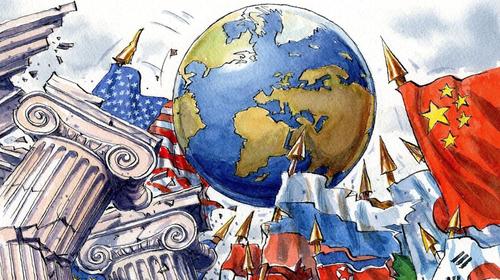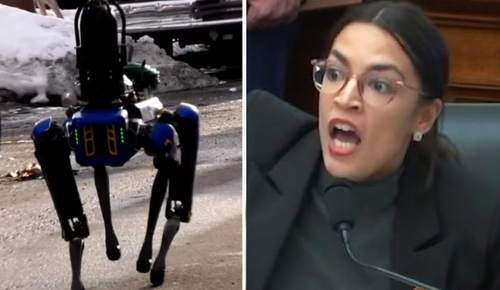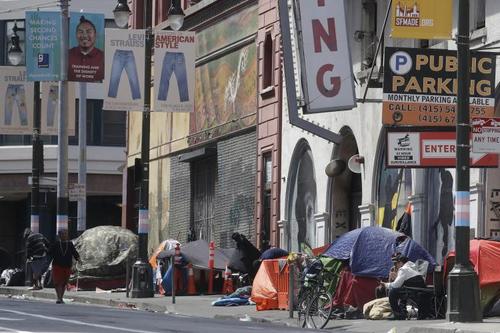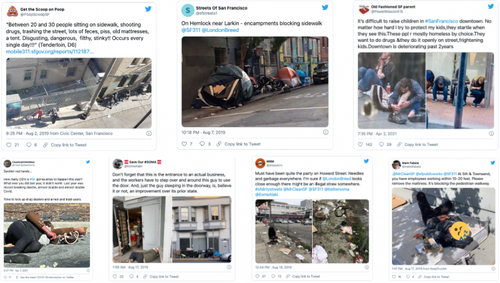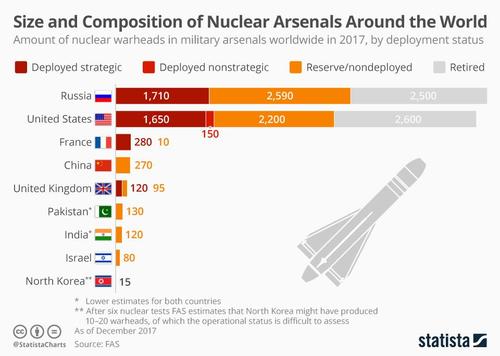
One of the most important things economists can do in a pandemic is not forget what we know. We know that central planners don’t have enough information and insight about the lives and activities of 330 million people to plan those lives in a thoughtful way. We know the problems that emerge when you distribute something valuable by giving it away. We know that government officials face bad incentives. We know that externalities pose problems for the straightforward “leave it to the market” viewpoint, but that large government interventions create new problems. In the rush to make pandemic policy, too many of these lessons were cast aside.
Central Planning
One of the most important controversies of the 20th century was the economic calculation debate. In his 1922 book, Socialism, Ludwig von Mises argued that without markets, central planners would not know how to “calculate.” Specifically, they wouldn’t know how many of various goods to produce, how to produce them, and whom to allocate them to. In the 1930s and 1940s, Mises’ student Friedrich Hayek advanced the argument by noting the ways an economy depends on dispersed information that exists in the minds of millions of people. This information about individuals’ “circumstances of time and place,” he wrote, could not be captured by a central planner. Hayek’s most famous contribution to the debate was his 1945 article “The Use of Knowledge in Society,” published in the American Economic Review. That article led modern Hayekians to use the phrase “local knowledge” as a shorthand for Hayek’s “circumstances of time and place.”
By the end of the Cold War, most economists—even some socialists—were acknowledging that Mises and Hayek had won the debate: The Soviet planners had failed because they had embarked on a task that could not succeed.
But in the COVID-19 era, a lot of policy makers have let this lesson slip their minds. While few have advocated full-blown state socialism, many have forgotten the more general truth that officials don’t have enough information to make detailed plans about people’s lives.
Take Gavin Newsom, the first governor to impose a statewide lockdown. The California Democrat listed 16 infrastructure sectors deemed so essential that they would not have to lock down. Restaurants, hairdressers, gymnasiums, and schools, not being among them, were compelled to close. So were large swaths of the retail economy. But Newsom did not base these regulations on a sophisticated understanding of what is essential and what is not. He couldn’t. No one has that understanding, for the reasons Hayek laid out long ago. The list of essential industries came from an old script; it was not highly correlated with the relative value of various industries and was not closely based on risks of spread.
What was missing from the discussion is something known only in the minds of the humans involved: the value of what was lost. Measuring the loss of gross domestic product (GDP) doesn’t quite do it, because the private sector component of GDP is valued at market prices but the value consumers put on goods and services typically exceeds the sticker price. (Economists refer to the value minus the price as consumer surplus.) Gatherings of more than a few people at funerals, for example, were prohibited; many mourners surely valued the gathering they had to miss at more than the ceremony’s price.
Central planners tend to come up with one-size-fits-all policies even when the evidence shows a large range of “sizes.” With the lockdowns, the most extreme instance of that may be the decision in various jurisdictions to close schools to in-person instruction. Even if, like me, you aren’t a fan of government schools, they arguably create at least one large valuable service: day care. So shutting them down—while paying full, or close to full, salaries to public school teachers—took away one of the most valuable services the institutions provided, while shifting the costs onto parents.
Whether or not one ultimately agrees with it, one can understand the decision to close schools in March and April of last year. But as more data came out, it became increasingly clear that students ages 15 or younger had only a tiny risk of dying from COVID-19. The latest data from the Centers for Disease Control and Prevention (CDC) shows that from January 1, 2020, to February 17, 2021, only 140 U.S. residents under age 15 died from the disease—just 0.03 percent of the overall COVID-19 deaths. During the 2019–20 flu season, according to the CDC, about 434 U.S. children under age 18 died from the flu. Yet no one advocated closing schools over that.
Of course, there is the risk of transmission from children to teachers. But teachers in Sweden, which avoided school shutdowns, had a slightly lower fatality rate than I.T. technicians. That comparison is relevant because many I.T. technicians can and do work from home, and probably did so increasingly after the worry about the coronavirus became widespread.
What about the risk of transmission from school children to their parents or other family members? If you’ve paid attention to recent protests in California and elsewhere, you’ll realize that many families are eager to take that risk.
Moreover, the comparison between private schools and public schools is telling. In a January 2021 article in Axios, Erica Pandey notes that only 5 percent of private schools were “virtual” last fall, with presumably 95 percent being in person. That contrasts with the 62 percent of students in public schools who started school in the fall online. The difference is wonderful for the private school kids and tragic for many of those in public schools, but those with local knowledge and local control were most able to get kids back into classrooms.
The pathologies of central planning also played out with the COVID-19 vaccines. In early May, four economists—Susan Athey of Stanford, Michael Kremer of Harvard, Christopher Snyder of Dartmouth, and Alex Tabarrok of George Mason—wrote an op-ed in The New York Times titled “In the Race for a Coronavirus Vaccine, We Must Go Big. Really, Really Big.” It advocated two major forms of federal spending for a vaccine. One, which they called a “pull incentive,” was a commitment to buy 300 million courses of vaccine at a price of $100 per person. The second, which they called a “push incentive,” was a guarantee of “partial reimbursement for production capacity built or repurposed at risk and partial reimbursement as they achieve milestones.”
The authors didn’t discuss how the vaccine should be distributed once the federal government paid for it. Presumably they wouldn’t favor letting the drug companies sell a vaccine to the public after being paid by the federal government; that would have created an uproar. By default, their not mentioning distribution probably left most readers thinking they wanted the federal government to distribute the vaccine.
The good news is that the feds are not distributing the vaccine. The bad news is that state governments are deciding who gets it. Furthermore, no one pays for it, so we lack a price system. Without prices, there are huge lines to get vaccinated; people who barely value the vaccine sometimes get it ahead of people who value it a lot; and the incentive for those administering the vaccine to do so quickly is lower than it would be in a free market.
Could it have been different? Yes. On January 11, 2020, Yong-Zhen Zhang of China distributed the virus’s genetic code; two days later, the Moderna lab in Massachusetts formulated one of the vaccines now being used. That was more than three months before the economists’ article in The New York Times. So even without federal subsidies, Moderna would have been ready to sell the vaccine by the time it actually did so in late December. Then it could have distributed it to front-line health care workers and older people in nursing homes for, say, $20 a pop and sold doses to a lot of the rest of us for more. If the prices were too high for some people to afford, the government could have helped low-income Americans pay for the vaccine without involving itself in the distribution process.
The Food and Drug Administration’s power to say no to drugs and vaccines that it thinks haven’t been sufficiently tested for safety and/or efficacy is also a form of central planning. Without that power, we could have had the vaccine earlier. Even if the agency’s power to “just say no” to drugs were restricted to its pre-1962 powers, when it could insist on safety but not on efficacy, we would have had the vaccine months earlier. That would have saved tens of thousands of lives.
Incentives
Another fundamental insight from economics—one that is arguably the basis of almost every other economic insight—is that incentives matter. Decision makers whose rewards are closely tied to the value their decisions create will tend to make decisions that create, or at least allow, a lot of value. They will sometimes fail, but they will try hard to make good decisions.
On the other hand, decision makers whose rewards are unrelated to the value of the decisions they make will make good decisions much less often. Even more perversely, if their decisions benefit only narrowly defined interest groups, such as government workers, their decisions might well destroy value.
Does this sound familiar? Consider Anthony Fauci’s guidance to the American public early in the pandemic, from his perch on the White House Coronavirus Task Force, that there was no need to wear a mask. Later, Fauci conceded that this wasn’t true; he had said otherwise, he maintained, to ensure an ample supply of masks for health care workers who needed them more than the average American. He didn’t seem to take account of the damage that would do to the federal government’s credibility.
Credibility is particularly important during a fast-moving pandemic. But Fauci would be paid the same $417,608 annually no matter what he said.
Moreover, the issue of incentives is relevant to the school opening issue discussed above. Private schools depend on tuitions and gifts to stay in business. Public schools, by contrast, get funded whether they teach in person or on Zoom. And public school teachers are typically paid full salaries even if they teach from home.
Externalities
The strongest argument for lockdowns is that when one person passes the virus on to another, he creates a “negative externality”—economists’ term for a cost that someone imposes on others that wasn’t accounted for when the person decided to act. The classic example is air pollution from a factory. The plant spews smoke into the air; it makes its way to tens of thousands of lungs; and, absent liability, fines, or agreements, the factory owner has little or no incentive to care.
If the factory’s smoke entered the lungs of workers voluntarily laboring at the factory, though, that would not be classified as an externality. Whatever the lowest wage they would have been willing to work for in the absence of the smoke, that wage will be somewhat higher with the smoke. The factory owner can then decide whether it’s cheaper to reduce the smoke or to continue as usual but pay higher wages.
Why do I note that caveat? Because what is sometimes described as a COVID-19 externality is not necessarily one.
Consider a customer going to a bar and knowing that there’s a risk he could get infected. He has an incentive to take account of that risk. The other customers in the same position have an incentive to take account of the risk. The owner, knowing that some customers will be worried, has an incentive to take account of the risk. Private property helps “internalize” the externality.
It doesn’t fully internalize it, because there are many bars, many restaurants, many gyms. So people leaving the first bar might spread the virus elsewhere, imposing a cost on patrons and workers at those other bars, restaurants, and gyms. But much of it is internalized.
In a recent paper, the George Mason economists Peter T. Leeson and Louis Rouanet note another way COVID-19 externalities differ from pollution. The polluter typically doesn’t worry about the pollution that blows downstream. Many people, by contrast, do worry about being in contact with others and either infecting or getting infected by them. One need only look at the huge voluntary changes people made in their lives to see how important this factor is. Well before the first lockdown, Americans canceled trips and conferences and quit going to indoor restaurants and bars. On a smaller scale, people going about their business in town wear masks, and if they don’t—and sometimes even if they do—they try to maintain a decent space between themselves and others, especially if those others are unmasked.
To the extent there is an externality, we should also remember a point made by Nobel-winning economist Ronald Coase: The person who suffers from pollution downwind from a factory would not suffer if he weren’t there. That observation has led economists in Coase’s tradition to the concept of “least-cost avoider.” Economists tend to focus on the efficient outcome, and the efficient outcome requires looking at who has the lower cost of reducing or eliminating the externality. When people live near an airport, for example, the cheaper solution might be to have airplanes produce less noise. But it might instead be for homeowners to install double-pane or triple-pane windows.
In this pandemic, governments have chosen to prevent a huge number of interactions among people who are at low risk of suffering from the disease. Given that the risk of death by COVID-19 for older people with comorbidities is orders of magnitude higher than the risk for the general population, the lower-cost solution would probably have been for the elderly to isolate themselves.
That has a lower cost for two reasons. One is sheer numbers: It’s easier for 40 million people to isolate than for more than 300 million people to isolate. The other reason is that elderly people with comorbidities are more likely to be retired or to work from home. So their loss from staying in their homes is low.
Moreover, it wouldn’t necessarily require a mandate that the elderly isolate. They could do so if they wish, and most probably would choose to do so. But governments should not insist—as New York, New Jersey, and Pennsylvania did—that nursing homes readmit people who test positive for the virus.
Just as even paranoids can have real enemies, even optimists can have real grounds for hope.
I think almost all of us were surprised at how quickly most governors and many mayors moved to close down major sectors of the economy. This was a really large attack on economic freedom, the largest in my lifetime, and it happened within days. In most cases, executives did it with zero consent from legislatures. They used existing law to the limit and, some legal scholars say, beyond the limit. I doubt those officials typically thought in March 2020 that we would still be locked down in January 2021. But the lockdowns took on a life of their own.
Recall, though, an earlier anti-liberty episode that was not nearly as shocking as the lockdowns. In 2005’s Kelo v. New London, the U.S. Supreme Court gave its blessing to a city government’s use of eminent domain to expropriate property from homeowners and transfer it to a private entity, the New London Development Corporation. This sent shockwaves through the country. The Institute for Justice, which represented the losing side before the Supreme Court, has noted that the decision “sparked a nation-wide backlash against eminent domain abuse, leading eight state supreme courts and 43 state legislatures to strengthen protections for property rights.”
Could we see a similar response to the lockdowns? Already there have been some moves at the state level to limit governors’ lockdown powers. A bill that passed both the House and the Senate in Ohio would have limited the Ohio Department of Health’s power to quarantine and isolate people, restricting it to only those who were directly exposed to COVID-19 or diagnosed with the disease. Similarly, in Michigan, the Senate and House passed a bill to repeal a 1945 law that Gov. Gretchen Whitmer had used to impose the state’s rather extreme lockdowns. Both bills were vetoed, but I doubt that will be the end of the story.
Even if it doesn’t happen until this particular pandemic is over, there’s good reason to believe that some state legislatures will want a say in future decisions. Whatever the case for letting governors move so quickly early last year, that case gets weaker and weaker the longer the lockdowns last. At some point, legislators just might roll back those powers. Or so we can hope.
from Latest – Reason.com https://ift.tt/3aTVGO0
via IFTTT
